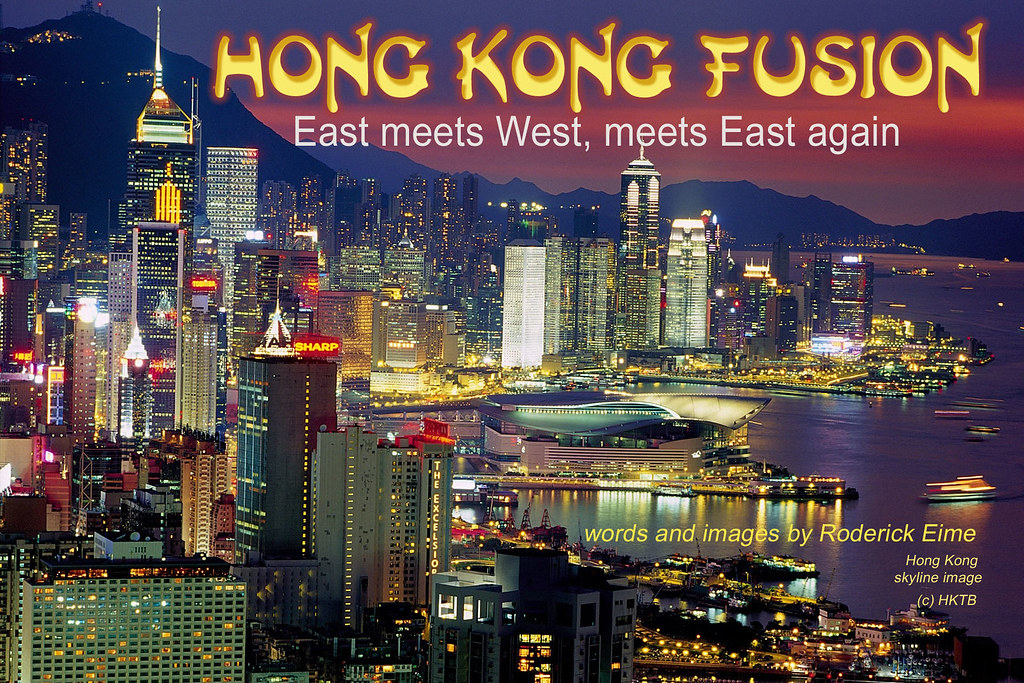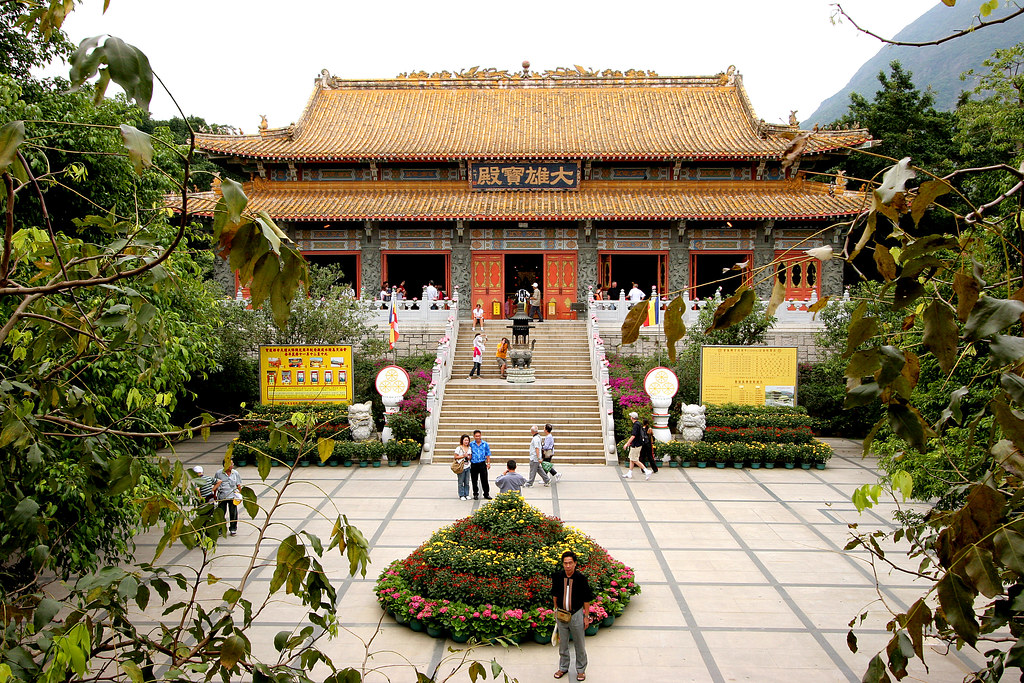Site Links
Hong Kong – The Great Chinese Melting Pot

The vibrant and bustling seaport of Hong Kong has enjoyed a prominent part in the grand opera of Asia. Roderick Eime
The dramatic events of the mid-19th Century created Hong Kong from a string of minor fishing villages on the island that now bears its name. The British, on an expansionist roll, obtained Hong Kong Island in 1841 and then, in 1860, Kowloon on the adjacent mainland, after giving the Chinese forces of the Qing Dynasty a sound hiding in the two Opium Wars.
Prior to this, Macau had been the sole enclave for European settlement in Asia, but the new colony soon overtook the Portuguese outpost as the key regional
At the end of the last century, Hong Kong was back in the news with the historic handover of the British colony to the People’s Republic of China. Although many were nervous about the returning Communists, the transition was much less troublesome than many imagined and Hong Kong residents still enjoy special economic and political concessions.
The vast majority of Hong Kong’s 7 million residents are Cantonese-speaking Chinese with many arriving all the time from the mainland in search of work in the ‘Special Administrative Region’. The foreign ‘ex-pat’ population is high too with many Westerners from the USA, Canada, Britain
Hong Kong opened an ultra-modern new international airport at Chek Lap Kok near Lantau just before the handover, replacing the outdated but exciting Kai Tak airport in Kowloon. Before the new airport opened, arriving by air was a nervous affair and many will remember looking in on Kowloon high-rise residents eating their evening meal as planes approached low for
Victoria Harbour still enjoys a healthy reputation as a busy maritime port, serving both commerce and leisure. It is quite common to see large luxury cruise liners in port surrounded by smaller ferries, powerboats and cargo barges. Multi star vessels from Silversea, Princess, Star Cruises and P&O are regulars in port as well as many smaller vessels operating local waters.
Hong Kong is currently subject to a great deal of redevelopment and beautification but, despite a mixed feeling about the colonial past in some quarters, a great deal of attention is being paid to preserving the heritage and cultural legacy of previous generations.
Take your pick and mix the old and new in a blend to your own liking.
Scenic Lan Tau

The nearby island of Lan Tau is a distinct contrast to the hurly-burly of Hong Kong and Kowloon. Steeped in recent and ancient history, it was the site of Neolithic and Bronze Age (~2000BC) populations and was the site of numerous strategic conflicts involving Chinese,
Still on Lan Tau, be sure to experience the brand new gondola lift opened as part Ngong Ping 360 tourism development that incorporates a themed village, dining, shopping
Visitors to Lan Tau can enjoy a great range of quite adventurous walks to any of the peaks and lookouts around the island. A well-located and relatively exclusive beachfront resort has operated on the island for several years at Mong Tung Wan and is a popular weekend escape for the better off Hong Kong residents.
Opened amid great fanfare in September 2005 is Hong Kong Disneyland. A joint project between Disney and the government, it is built atop a massive land reclamation project over the old, messy shipyard at Penny’s Bay and now employs around 5000 “cast members”. The US$1.8 billion construction includes the theme park, two hotels
"Hong Kong Disneyland stands before us as a living symbol of the creativity and imagination that are the heart and soul of Disney," said the then Disney CEO, Michael Eisner at the opening, "With a spirit of goodwill and friendship, we invite the people of Hong Kong, China and all of Asia to share in the magic, imagination and soaring spirit of Disney."
Shopping
Hong Kong no longer enjoys a reputation for cheap electronic and consumer goods, in
For a non-stop experience of local, urban Chinese lifestyles, look no farther than Yau Ma Tei and Mong Kok - the heart of the Kowloon Peninsula. Within these two
Hong Kong's authentic "Chinatown" District is the thriving Western, a hive of shophouses, exotic markets
Getting Around
Despite Hong Kong’s high density and traffic chaos, people manage to get around with a minimum of fuss. Drivers are generally tolerant and forgiving, just don’t be in a hurry as traffic doesn’t travel much faster than a brisk walk and there is always a minor jam somewhere on your route. Taxis, buses
Must See and Must Do in Hong Kong – The New and the Old
Scale Victoria Peak
High above Hong Kong Island on the 'back of the Dragon', Victoria Peak is Hong Kong's premier visitor attraction, providing magnificent
Take the Peak Tram
The best way to get to the top is via the Peak Tram, a funicular railway that travels a steep 373m line up the lush mountainside. The tram first operated in 1888, and once competed with sedan chairs as the most popular way up. Try to get seats at the front of the tram on the right-hand side for the best views on the journey skyward. Fare: HK$20 one way
Explore the new Maritime Museum
Opened in September 2005 in Stanley Plaza, this fascinating new complex was funded by the maritime industry as a non-profit educational institution and features extensive modern and ancient galleries of Chinese seafaring history.
Go Green at the Wetland Park
The Hong Kong Wetland Park comprises a 10,000m2 visitor
Star Ferry
Looking something like a two-headed beluga whale, the ungainly and quaint Star Ferries have been running across Victoria Harbour for over a century and are another fondly maintained part of Hong Kong’s colonial heritage. The
Double Decker Tram
Almost ignored by the HK residents as commonplace, the charming double-decker electric trams are an important part of Hong Kong Island’s history. The service is over one hundred years old and is still widely
Sail the Duk Ling
Sail Hong Kong's scenic
Sip at Flagstaff House – Museum of Tea Ware
Experience the ancient art of the tea ceremony and learn all there is to know about tea blends, brewing and serving from an authentic master. Built in the 1840s, Flagstaff House originally served as the office and residence of the Commander of the British Forces in Hong Kong. It was converted to the Museum of Tea Ware in 1984.
Turbo Jet to Macau
If you have an extended stay in Hong Kong, a day trip at least or a night or two in Macau is a fascinating side trip. Explore the rich European cultural history that predates Hong Kong by 300 years. There’s wonderful 16th Century World Heritage architecture, great restaurants, museums and, of course, the famous gambling. Macau is definitely undergoing a huge growth spurt at the moment and enormous, Las Vegas-style casinos, tourist attractions
Where to Eat:
The choice of restaurants in Hong Kong is overwhelming, there’s over 9,000. You can choose any number of ethnic
See Related Story: The World Wide Wok
Where to Stay
Five Star: Four Seasons Hotel
A staggering property. Set on a waterfront, overlooking Victoria Harbour and the financial district, Four Seasons Hotel Hong Kong redefines luxury and excellence in a city renowned for exceptional accommodation. As a part of the prestigious International Finance Centre, the property offers effortless links to Hong Kong Station, with the famed Star Ferry almost at the door. From HK$620 per night.
Otherwise: YMCA International House Hong Kong
Situated in Yaumatei area, YMCA International House Hong Kong has over 400 quality guest rooms and is easily accessed from the shopping arcades and the commercial
Best Times To Go
The skies are clear and the
Currency:
HK$ Hong Kong Dollar
HK$8.00 = (about) US$1.00
Electricity
220V with British and European connectors
- Helen Wongs Tours (Australia)
- Hong Kong Tourist Board
- Lonely Planet Destinations On Line
- Unofficial Guide
- Hong Kong Disneyland
- Airport Information
- MTR (subway)
- Government
Guidebooks:
The author, Roderick Eime, is a Sydney-based travel writer and photographer and visited Hong Kong in May 2006 as a guest of the Hong Kong Tourist Board.
|
All material, unless otherwise noted, is copyright to the author and may not be used, reproduced or mirrored without express consent in writing. Permission is not specifically sought for linking, although the author does appreciate notification.
|